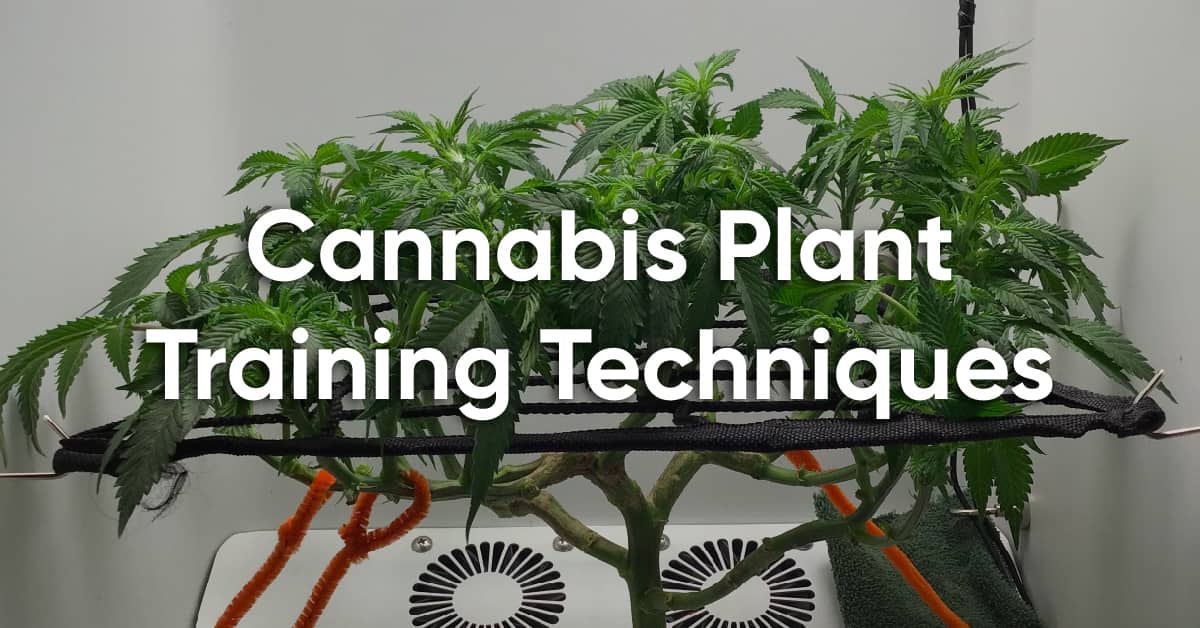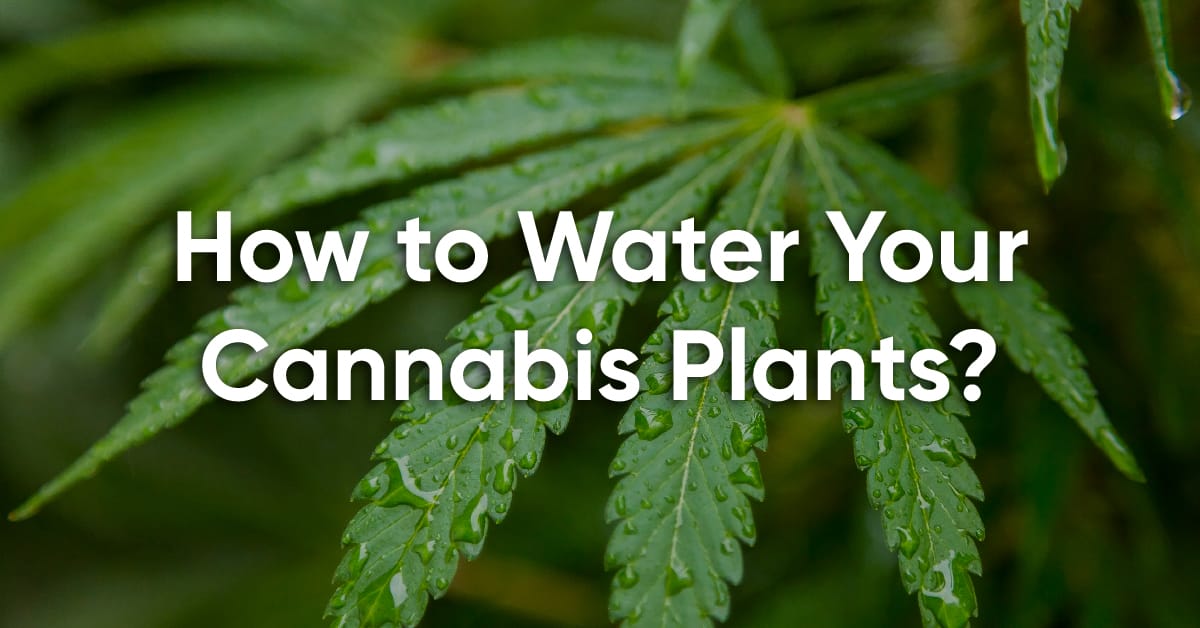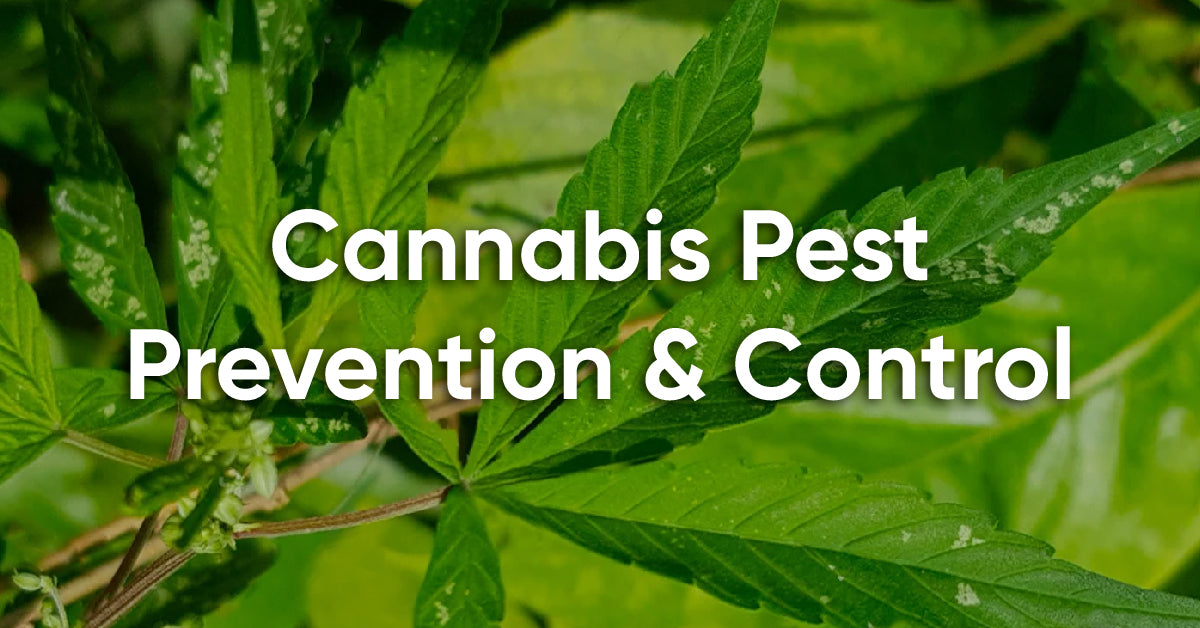How to Defoliate Cannabis for Better Growth & Yield
Cannabis cultivation is a delicate balance of science and technique, and defoliation stands as a pivotal practice within this realm. In this concise guide, we'll explore the meaning of cannabis defoliation and its pivotal role in optimizing plant health and yield.
What's the Meaning of Cannabis Defoliation?

Defoliation, also known as deleafing, means the removal of leaves from your cannabis plant. It can be done for various reasons, such as pest control, enhancing air circulation and light penetration, and boosting overall yields.
5 Reasons to Defoliate Cannabis Plants

Defoliating your cannabis plant provides a myriad of benefits, all aimed at boosting the plant's overall growth and yield.
1. Amplified Light Exposure
Trimming excess foliage allows light to penetrate deeper, nurturing lower bud sites for enhanced overall growth.
2. Enhanced Air Circulation
Improved airflow minimizes the risk of mold growth and pest infestations. That would foster a healthier and more resilient growing environment.
3. Increased Bud Sites
Pruning encourages the plant to channel its energy into bud development. In the end, you'll get larger and more plentiful yields.
4. Efficient Nutrient Distribution
Selective leaf removal redirects nutrients to areas where they're most needed—specifically, bud formation.
5. Stress Management
Controlled defoliation complements other cannabis training techniques, shaping plants for maximum light absorption.
When & How to Defoliate Cannabis Plants
Unlocking the full potential of your cannabis plant's yield requires strategic defoliation techniques.
By selectively removing certain leaves, you can optimize light penetration, airflow, and energy distribution. Let's explore how to defoliate cannabis plant during different growth phases for a max of harvest.
For the best results, perform defoliation during early vegetation or initial flowering. Ensure robust photosynthesis by avoiding over-pruning. And always use sterilized tools for clean cuts to keep infection risks low.
Early Veg Stage Defoliation
During this phase, the primary goal is to encourage the growth of sturdy branches from axillary buds. Here's how:
- Identify fan leaves located under auxiliary buds.
- Use clean, sharp scissors or pruning shears to remove the leaves precisely.
- Trim cautiously to avoid stressing the plant.

Late Veg Stage Defoliation
In this period, the focus shifts to branch development. The aim of defoliation is indeed to promote the growth of strong branches rather than leaves.
In general, cultivating 8-12 strong branches at this stage can expedite the switch to the flowering stage, leading to earlier bud production.
To achieve this goal, remove unnecessary fan leaves. Specifically, you still want to trim leaves situated beneath the auxiliary buds. This action redirects the plant's energy toward branch development, and you'll get a sturdy and bushy plants.

Image via Hey abby grower @Chris Mafia
Flowering Stage Defoliation
When your cannabis plant starts blooming, the defoliation technique should be done selectivelyto avoid excessive stress that might hinder optimal bud growth. Target only yellowing or obstructing leaves to maintain efficient energy production.
Hey abby Automated Grow Box: Your Path to Harvest Excellence!

Embark on the real hasslefree growing journey with Hey abby's weed grow kits. By investing in such an innovative grow system, you'll receive not only step-by-step guidance on growing basics, but also personalized 1-on-1 expert support for advanced techniques.
Success isn't just promised; it's guaranteed.
Cannabis defoliation, when performed thoughtfully, can help your cannabis plants achieve exceptional yields. With additional guidance from experts and insights from fellow growers, rest assured you're on the right path every step of the way.
Let Hey abby be your trusted companion on this rewarding journey, and watch your plants thrive like never before.
Differences Between Defoliation and Pruning
Cannabis Defoliation
Defoliating cannabis is centered around the selective removal of particular leaves. The primary goal is to enhance light penetration and airflow within the plant canopy.
By targeting specific leaves that might be shading lower growth or impeding proper air circulation, defoliation encourages improved overall plant health and better utilization of resources.
Cannabis Pruning

Unlike defoliation, pruning cannabis plants involves the removal of entire branches or stems. Its primary purpose is to shape the plant's structure and direct its growth.
By strategically eliminating certain branches, the plant's energy is redirected to essential areas, such as promoting stronger lateral growth or focusing on key flowering sites.
Pruning is a more comprehensive approach that goes beyond leaf management to influence the overall architecture and development of the plant.
FAQs
1. When should you stop defoliating cannabis?
Minimize defoliation during the late flowering stage when leaves play a vital role in nutrient production.
2. Does defoliation damage plants?
Moderate defoliation redirects energy in a positive way. However, excessive removal can stress plants.
3. Are large fan leaves a good sign?
Indeed, sizable fan leaves contribute to effective photosynthesis. Prune with care to preserve plant health.
4. How late into the flowering stage can you defoliate?
Restrict defoliation activities after the fourth week of flowering to avoid unnecessary stress on the bud sites.
Final Words
Mastering the craft of defoliation is the key to optimizing the growth and yield of your cannabis plants. Customizing your approach to each stage ensures that your plants remain healthy and thriving throughout their lifecycle. Happy cultivating!
Get Weekly Expert Tips, and Grow Healthy Plants
Join our newsletter to get exclusive growing tips delivered directly to your inbox.



